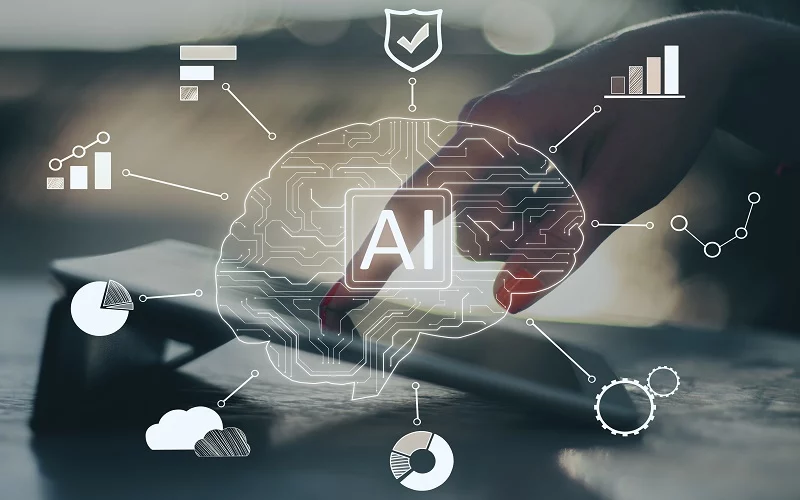Automation has become the core subject in all discussions, inside and outside of conference rooms. This blog is a part of three blogs in the series focusing on Hyperautomation.
In this part of the blog, we will discuss the concept of Hyperautomation and the challenges that can be resolved using Hyperautomation especially post Covid-19.
Background
As per a McKinsey report, there are certain occupations that are fully automatable; however, 30% tasks of all occupations can be automated for at-least 60% of occupations across organizations. According to the same report, there are five factors which affect the pace and extent of adoption of automation namely:
- Technical feasibility: Technology has to be invented, integrated, and adapted into solutions for specific case use.
- Cost of developing and deploying solutions: Hardware and software costs.
- Labour Market Dynamics: The supply, demand, and costs of human labour affect which activities will be automated.
- Economic Benefits: Include higher throughput and increased quality, alongside labour cost savings.
- Regulatory and Social Acceptance: Even when automation makes business sense, adoption can take time
The organizations are slowly but surely realizing the importance of automating various business activities. Consequently, we are witnessing a never seen focus on digitising processes and functions. Various technologies that are being used for automating are Robotic Process Automation (RPA), Artificial Intelligence (AI), BOTs, etc.
Challenges Faced By Businesses In The Current Scenario
The world saw a black swan event when Covid-19 locked people inside their homes. The lockdowns across the world led to a disruption of the digital transformation itself. The gradual and organic growth that Intelligent Automation was seeing, suddenly broke the ceiling. The C-suite were not expecting switching to digital operations for an extended period of time. Work from home, E-commerce, E-logistics, business processes exposed the industries to never seen bottlenecks. Reliance on manual processing, inefficiencies in such processes forced the top executives to rethink the business process strategies. Even before Covid-19 struck the businesses were facing real challenges namely:
- Legacy systems and integration issues with new technology: Without an exception, the legacy systems in old businesses are still used. This creates an issue whenever a new technology or API is introduced. Integration with newer technology becomes a challenge. A complex environment leads to confusion and chaos.
- Expensive human errors: To err is to human. However, these errors in the business environment can become expensive as sometimes correction costs are even higher than the cost of the error. Manual intervention can never be free of mistakes.
- Manual reporting leads to time inefficiencies: In most organizations, data ingestion, transmission, management is still carried out by employees. Repetitive task of data punching leads to inefficiencies of human resources. Such tasks can easily be replaced by automation and be done in much lesser time with almost zero inefficiencies.
- Human resource turnover leads to frequent changes in business processes: The classic issue that every organization faces is the change in business processes when human resources leave and new resources are inducted. This leads to a lack of standardization in processes as every person has a different style of working. Therefore, even if the organization would want to standardize the business processes, complete regularisation can never be attained.
- Absence of structured automation: Even where automation has begun, an indisputable fact of the current situation is that structured automation is still amiss across all organizations. Organizations have automated each and every process, as required in silos. A unified approach to automation is lacking which has further complicated the business processes.
- Increase in operational costs: The organizations with no or very less automation saw a spike in operational costs during Covid-19. This was due to the fact that people relied heavily on automation and digitisation to get their tasks done which were otherwise done manually.
Role Hyperautomation Plays
Recently, Hyperautomation has gained much popularity. Hyperautomation is defined as automating with advanced technologies through Artificial Intelligence (AI), Robotic Process Automation (RPA), etc. to derive enhanced processes. It includes automation of end-to-end processes through RPA, AI, Machine Learning, etc.
It aims to create a digital twin of an organization, commonly called a DTO. For instance, the actual organization could be functioning with 1000 people workforce. Hyperautomation gives a visual of how the same organization would appear with superior automation technologies.
Though Hyperautomation is a relatively new concept, organizations have announced a plan to consolidate its automation tools and move in to this direction. It is anticipated to be one of the top strategic technology trends in recent times. As per a study, by 2024, organizations will lower operational costs by 30% by combining Hyperautomation technologies with redesigned operational processes. Thus, Hyperautomation is the talk of the town which shall help in reducing costs, saving time, and take automation one notch higher.
Hyperautomation Use Case
To explain the concept better, one can refer to a case study of the banking and financial services sector. Banks can exploit Hyperautomation at an enhanced level and derive benefits. Various functions such as lending operations, back-office tasks, regulatory reporting, sales and marketing, credit rating, etc. can be hyperautomated. For eg., a KYC process can be hyperautomated. Currently, e-KYC is a common concept whereby an Intelligent Character Recognition Solution converts a handwritten KYC form to an electronic form, filling in appropriate fields of KYC. This information is then further transmitted to other systems. This Intelligent Automation solution can read various transactions and identify any fraudulent activities carried out in bank accounts. The technology can also predict the probability of fraudulent transactions in a specific account, thereby reducing the risk significantly. This also helps in the credit rating of a customer and aids in identifying NPAs at an early stage, which is not possible through manual intervention.
How Hyperautomation Can Help Organisations?
Hyperautomation is a boon that will impact our lives on a large scale. What people did not understand until now, Covid-19 taught a tough lesson in a span of few months – ‘Technology is indispensable’. While automation has been around for a while, Hyperautomation is the big brother which shall take automation to next level. Hyperautomation can make difference in the following manner:
- Hyperautomation automates the business processes in a unified manner. Individual process automation done in silos is not as effective and hence Hyperautomation delivers enhanced results when compared with automation. It helps in delivering value.
- It is large scale automation that does not involve only IT but all business processes. It ensures that all stakeholders are involved and contribute towards Hyperautomation.
- It is smart automation. Not only does it reduces mundane and routine tasks, but also takes simple decisions making the human resources free for strategic decision making. It also helps in delivering job satisfaction and hence employee retention.
There is no doubt in the fact that Hyperautomation is the future of digitisation. Though the concept is still blooming, harnessing the benefits of the same may take some time.
This blog is the first in a series of blogs on Hyperautomation. The next blog would focus on Hyperautomation in different business functions especially taxation and the future of it.
Click to know more about the aspects of Hyperautomation – Role In Taxation With Different Technologies and Hyperautomation – In Different Business Functions And Its Future










